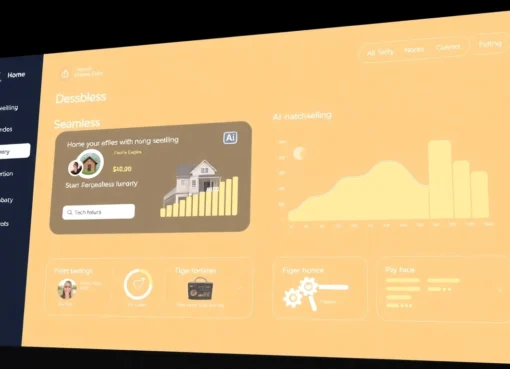Expert Remodeling Solutions for Stunning Home Transformations

Understanding Remodeling: Definitions and Scope
What Does Remodeling Entail?
Remodeling encompasses the comprehensive process of transforming a property’s structure, design, and functionality to meet current aesthetic preferences, lifestyle needs, or increased value. It involves altering existing layouts, upgrading materials, and implementing innovative design elements to create a more functional and appealing space. Unlike simple cosmetic updates, remodeling often includes structural modifications such as removing or adding walls, altering electrical and plumbing systems, and adapting the overall framework of a property.
At its core, remodeling is about evolution—rethinking space utilization, enhancing comfort, and increasing overall property value. Whether it involves a kitchen overhaul, transforming a basement into a livable area, or reconfiguring the layout of an entire home, remodeling processes are highly customizable to fit individual goals and budget constraints. For those seeking professional guidance, firms like Remodeling experts provide comprehensive services that cover planning, design, and execution for a seamless transformation.
Key Differences: Remodeling vs. Renovating
Understanding the distinction between remodeling and renovating is essential for setting expectations and planning effectively. Renovation refers to restoring or updating a space primarily through cosmetic repairs or replacements that do not alter the fundamental structure. Typical renovation projects include repainting walls, replacing fixtures, or updating flooring to improve aesthetic appeal without significant structural changes.
In contrast, remodeling involves a fundamental redesign that often modifies the structure, layout, or core elements of a home. For instance, removing walls to create an open-concept living area or expanding a kitchen to a new footprint are remodeling activities. Both approaches can increase a property’s value and functionality, but remodeling is generally more complex and costly due to the extensive work involved.
Maximizing the benefits of either process depends on project scope and desired outcomes. Consulting with seasoned professionals can help determine the suitable approach, optimize budgets, and achieve targeted improvements to your property.
Common Remodeling Projects and Their Benefits
Some of the most popular remodeling projects include kitchen renovations, bathroom upgrades, basement finishing, and room expansions. Each of these projects offers specific advantages that contribute to improved living conditions and increased property value.
- Kitchen Remodeling: Enhances functionality, aesthetic appeal, and energy efficiency. Modern kitchens with updated appliances, countertops, and cabinetry attract homeowners and potential buyers alike.
- Bathroom Upgrades: Improve comfort, accessibility, and aesthetics. Features like walk-in showers, modern fixtures, and smart lighting contribute to more inviting spaces.
- Basement Finishing: Expands usable square footage for recreation, home offices, or guest accommodations, boosting overall home value.
- Room Additions and Expansions: Growing families or changing needs may require enlarging existing spaces or adding new rooms for work, leisure, or sleep.
Beyond aesthetic appeal, remodeling projects bring tangible benefits such as increased energy efficiency, enhanced safety standards, better storage solutions, and modernized layouts, all of which directly impact daily living and long-term investment returns.
Planning Your Remodeling Project
Setting a Budget and Timeline
Effective planning begins with clear financial and temporal boundaries. Establishing a realistic budget involves evaluating your financial capacity, desired scope, and contingency funds for unforeseen expenses. Industry standards suggest setting aside an additional 10-20% of your estimated costs as a contingency reserve to address surprises like hidden structural issues or material price fluctuations.
Timeline planning requires assessing the scope of work, availability of materials, contractor schedules, and potential permitting processes. For complex projects, creating a phased schedule with milestones ensures progress tracking and minimizes disruptions. Consulting with a professional remodeling contractor can provide accurate estimates, mitigate delays, and streamline project execution.
Selecting the Right Remodeling Contractor
Choosing a reputable contractor is crucial for project success. Start by researching local firms with proven experience, positive customer reviews, and appropriate licensing and insurance. References and portfolios of completed projects provide insight into their craftsmanship and reliability.
Implement a thorough vetting process that includes verifying credentials, obtaining detailed bids, and comparing approaches and materials. Effective communication skills and transparent pricing are indicators of a trustworthy contractor. For example, firms like Remodeling contractors in Rochester, NY, exemplify professionalism and quality craftsmanship, ensuring your vision aligns with execution capabilities.
Design Inspiration and Material Selection
Gathering design ideas from magazines, online platforms like Houzz or Pinterest, and visiting showrooms helps clarify your aesthetic preferences. Establishing themes—such as modern, traditional, rustic, or minimalist—guides consistent material choices and finishes.
Material selection impacts durability, maintenance, and aesthetic appeal. Consider eco-friendly options like recycled flooring, low-VOC paints, or sustainable cabinetry to align with green building practices. Consulting with designers and suppliers ensures you choose materials within your budget that meet your functional and stylistic goals.
Executing a Successful Home Remodeling
Step-by-Step Remodeling Process
Successful remodeling follows a structured process:
- Initial Consultation and Design: Define goals, budget, and design preferences.
- Design Development: Create detailed plans and select materials.
- Permitting and Approvals: Obtain necessary permissions to ensure compliance.
- Demolition and Prep: Safely remove existing structures or elements.
- Construction and Installation: Implement structural changes, install fixtures, and finishes.
- Inspection and Final Touches: Verify quality, address punch-list items, and complete cleanup.
Throughout each phase, regular contractor meetings, clear documentation, and quality control are vital to keep the project on track.
Managing Challenges and Unexpected Issues
Despite meticulous planning, unforeseen problems such as hidden damage, code violations, or supply chain disruptions may arise. Approaching these challenges proactively involves maintaining contingency funds, flexible scheduling, and open communication with your contractor.
Case studies show that early detection and quick problem-solving minimize delays and cost overruns. For example, discovering old wiring that doesn’t meet current safety standards can be addressed with prompt upgrades, preventing future hazards.
Ensuring Quality and Safety Standards
Adherence to local building codes and safety regulations is non-negotiable. This includes proper structural support, electrical wiring, plumbing, fire safety measures, and environmental considerations. An experienced contractor will coordinate inspections and ensure all work passes compliance review, safeguarding your investment and family’s well-being.
Using high-quality materials and employing certified tradespeople contribute to the longevity and safety of your remodeling project, further maximizing your investment.
Measuring Remodeling Success
Evaluating Project Outcomes and Satisfaction
Post-completion assessments involve comparing actual outcomes against initial goals. Key metrics include visual appeal, functionality, adherence to budget and schedule, and overall satisfaction with the process and results.
Collecting feedback from stakeholders and conducting walkthroughs help identify areas for improvement in future projects.
Increasing Home Value Through Remodeling
Strategic remodeling can significantly enhance a property’s market value. Trends indicate high ROI on kitchen and bathroom upgrades, structural modifications, and energy efficiency improvements. For example, according to industry reports, a well-executed kitchen remodel may recoup up to 70% of its cost upon resale.
Careful selection of upgrades aligned with neighborhood standards ensures your renovations attract buyers without over-improving compared to surrounding properties.
Maintenance Tips for Long-lasting Results
Preserving your remodeling investment requires regular upkeep. This includes inspecting for water damage, repainting and sealing surfaces, maintaining appliances, and updating fixtures as needed. Proper ventilation, routine cleaning, and prompt repairs extend lifespan and sustain aesthetic appeal.
Establishing a maintenance schedule and working with trusted service providers ensure your remodeled spaces remain functional and beautiful for years to come.
Latest Trends and Tips in Home Remodeling
Popular Styles and Innovations
Modern remodeling trends emphasize open-concept layouts, smart home integrations, and minimalist aesthetics. Incorporating innovative technologies like voice-controlled lighting, automated climate control, and energy-efficient appliances enhances convenience and sustainability.
Design trends also favor natural materials such as wood, stone, and reclaimed metals, blending aesthetic appeal with eco-consciousness. Multi-functional furniture and adaptable spaces respond to the growing need for flexibility in residential environments.
Sustainable Materials and Eco-Friendly Options
Sustainability plays a vital role in contemporary remodeling. Using low-impact, recycled, or renewable materials reduces environmental footprints. Examples include bamboo flooring, recycled glass countertops, and LED lighting systems.
Energy-efficient windows, insulation upgrades, and solar panel installations further decrease operating costs and carbon emissions, aligning with green building principles.
Cost-Effective Remodeling Ideas
Smart remodeling involves prioritizing projects with high ROI and low upfront costs. Painting existing cabinets, updating hardware, installing new lighting fixtures, or redoing countertops can drastically improve appearance without significant expense. Additionally, choosing standard designs and readily available materials can minimize delays and costs while maintaining style and quality.
Planning phase budgeting for minor upgrades first allows homeowners to enjoy immediate benefits and refine future renovation plans based on initial results.

